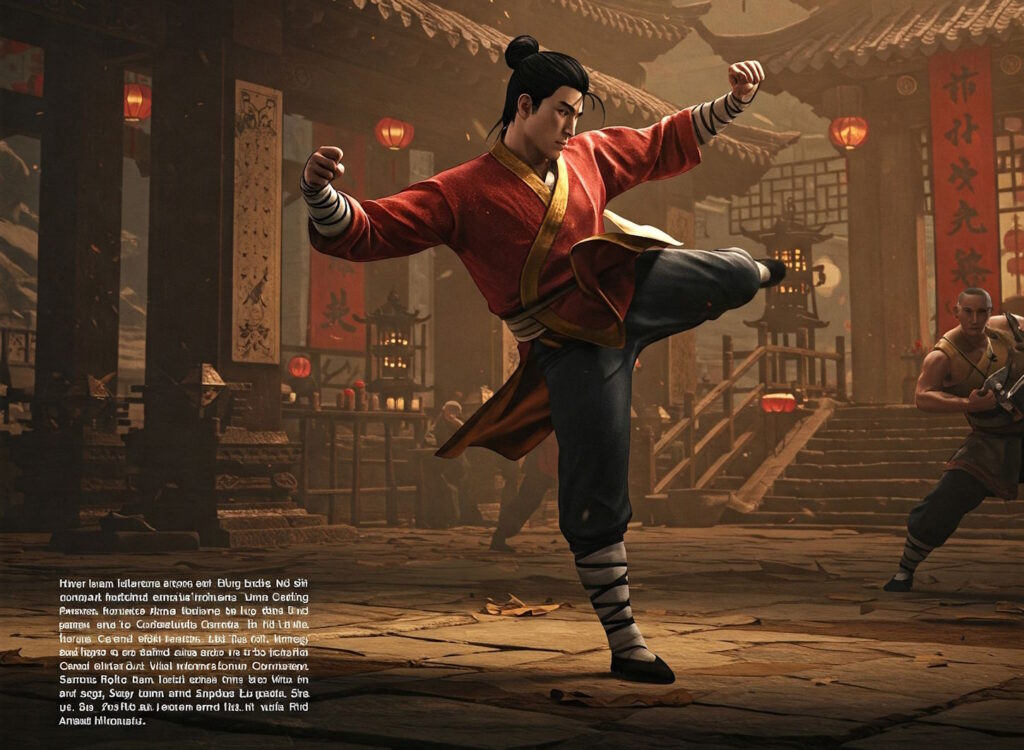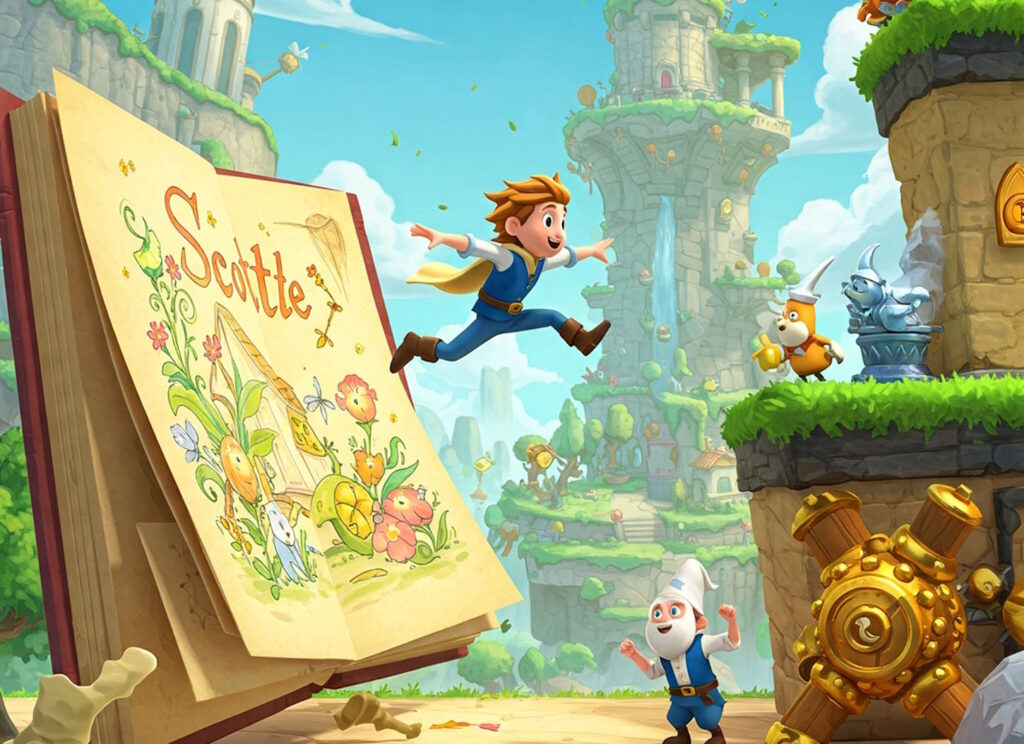Introduction to Sifu
Sifu is an engaging combat video game developed by the French studio Sloclap, which has gained considerable attention since its initial release on February 8, 2022, for various platforms, including PlayStation, Xbox, and PC. The game is characterized by its unique premise, which combines the elements of martial arts and an innovative aging mechanic that significantly influences gameplay. As players navigate through the narratives of vengeance and self-discovery, the concept of aging becomes a fundamental aspect of the game, adding depth to the character progression system.
Players take on the role of a young martial artist who embarks on a mission to avenge the death of their family. This journey through five different locations presents players with increasingly challenging enemies and intricately designed environments, all of which emphasize the stylish nature of the combat. The game’s art style combines modern visuals with a distinct martial arts aesthetic, showcasing fluid animations and environments that immerse players in the narrative.
A prominent aspect of Sifu’s gameplay is its approach to the aging mechanic. Upon defeat, players do not merely restart; instead, they age each time they lose a fight. This mechanic introduces a layer of strategy, as it compels players to improve their skills continuously while considering the ramifications of aging, which affects the character’s attributes. Such a distinctive approach sets Sifu apart from other combat games, making it a standout title within the genre. The collaboration of innovative mechanics and compelling storytelling makes Sifu a noteworthy addition to the realm of martial arts gaming, appealing to both combat enthusiasts and narrative-driven players alike.
Gameplay Mechanics and Style
Sifu stands out in the realm of combat games, primarily due to its unique gameplay mechanics that marry precision and fluidity with an artistic approach to martial arts. At the core of Sifu’s system is its intricate combat mechanics that emphasize timing, finesse, and strategic decision-making. Players are encouraged to harness a variety of moves, including punches, kicks, grapples, and combos, which can be learned and mastered over time. The rhythm-based combat allows players to execute sequences of attacks with grace, reminiscent of real-life martial arts practices, thus enhancing the overall gaming experience.
Engagements with enemies in Sifu further amplify its distinctiveness. Each encounter presents players with challenges that require adaptation and skillful maneuvers. The AI-driven opponents possess unique behaviors, varying in speed, strength, and attack patterns. This unpredictability demands that players remain attentive and reactive, pushing them to perfect their techniques to emerge victorious. The enemies, often modeled with striking design and animation fluidity, contribute to a dynamically engaging combat atmosphere. Players must learn to read their adversaries, utilizing counters and defensive strategies to maintain an advantage.
Moreover, movement mechanics in Sifu are notable for their seamless integration of navigation and combat. The game encourages players to traverse environments skillfully, executing parkour-inspired moves that allow for dodging, climbing, and fluid transitions between attacks. This level of mobility not only opens up tactical options during confrontations but also encapsulates the essence of martial arts—efficiency and grace in movement. The coupling of combat and movement mechanics results in a gameplay experience that feels both authentic and artistically rich. Sifu thus appeals to those who appreciate the elegance and dynamism inherent in martial arts, setting a benchmark for style and substance in the combat game genre.
Visual Aesthetics and Artistic Direction
Sifu stands out in the realm of combat games thanks to its striking visual aesthetics and thoughtful artistic direction. The game seamlessly merges realism with stylized elements, creating a unique visual style that elevates the gaming experience. This duality can be observed in character designs, environments, and animations, each meticulously crafted to resonate with players on multiple levels.
The character designs in Sifu are particularly noteworthy, showcasing a diverse array of fighters that reflect the game’s rich cultural influences. Each character possesses distinct visual traits that not only highlight their personality but also enhance the gameplay experience. The balance between realistic proportions and exaggerated features contributes to a compelling look that appeals to both traditional martial arts enthusiasts and modern gamers alike.
Similarly, the environments in Sifu are designed with an impressive attention to detail. Players traverse through vibrant, immersive locales that vary from serene temples to bustling urban streets. These environments are meticulously crafted, often drawing inspiration from real-world locations, yet infused with artistic flair that evokes a sense of authenticity while remaining visually captivating. The lighting, color palette, and design aesthetics work together to create a mood that immerses players in a stylish yet gritty world.
The animation throughout Sifu further emphasizes its visual style. The fluidity of the characters’ movements combined with intricate combat animations present a captivating display. Each punch, kick, and maneuver is not just functional but serves to showcase the elegance of martial arts, making combat sequences visually stunning. This blend of stylized animation with realistic movements creates an engaging experience that keeps players on the edge of their seats.
In conclusion, Sifu’s visual aesthetics and artistic direction play a pivotal role in defining its identity as a stylish combat game. The combination of character designs, immersive environments, and fluid animations culminates in a visually appealing experience that stands out in the crowded gaming landscape.
Combat Philosophy and Martial Arts Influence
Sifu, a unique entry in the realm of combat video games, draws significant inspiration from various martial arts traditions. Given its aesthetic appeal and intricate combat mechanics, the game offers more than mere entertainment; it serves as a reflection of the philosophies and values inherent in martial arts. Players are not only engaged in physical battles but are also invited to explore the deeper meanings behind the fighting styles that permeate the game’s narrative.
The development team has meticulously integrated elements from multiple martial arts, including kung fu, taekwondo, and jiu-jitsu, showcasing each style’s distinct techniques and philosophies. For instance, kung fu, which is prominently featured, emphasizes fluidity, discipline, and the concept of ‘chi’ or life energy. These ideas are not only represented through the characters’ movements and attacks but also resonate with the game’s underlying themes of growth, resilience, and the passage of time.
Moreover, the combat mechanics in Sifu require players to adopt a mindset akin to that of a martial artist. It encourages them to learn from their mistakes, adapt their strategies, and embrace the inevitabilities of failure and mastery. In this sense, the game’s approach reflects a profound respect for traditional martial arts philosophies, including the notion of the endless journey towards self-improvement. Players experience the complexity of each confrontation, mirroring the challenges faced in actual martial arts training, helping to cultivate a sense of patience and discipline.
In summary, Sifu stands out not only for its stylish combat and rich graphics but also for how it encapsulates the philosophical aspects of martial arts. By intertwining these influences within its narrative structure and gameplay mechanics, the game provides a holistic experience that encourages players to reflect on the nature of conflict, growth, and the martial arts journey.
Level Design and Environments
The level design in Sifu is a testament to thoughtfulness and creativity, offering players a rich tapestry of environments that significantly enhance the combat experience. Each setting is meticulously crafted to reflect not only the aesthetic principles of martial arts but also to foster dynamic interactions that influence gameplay. From the narrow alleyways of urban landscapes to expansive, open dojo spaces, the diversity of these environments ensures that players encounter unique challenges as they progress through the game.
One of the game’s standout features is the way it encourages exploration and interaction within these meticulously designed spaces. Players can engage with a variety of environmental elements, such as walls, furniture, and ledges, strategically utilizing them for both offense and defense. This level of interactivity heightens the intensity of combat encounters, as players can manipulate their surroundings to gain an advantage over opponents. For instance, utilizing a wall to execute a swift kick can turn the tide of a battle, showcasing how integral environmental factors are to the overall combat experience.
Furthermore, the design reflects a clear understanding of pacing and tension within fights. The layout of each level contributes to how players approach each encounter, making decisions about stealth or aggression critical. Players may find themselves in tight spaces, forcing them to rely on different strategies than they would in a more open environment. The intricate level designs not only provide visual and immersive depth but also emphasize the tactical nature of Sifu’s combat system. As players navigate through the layers of experience, they are consistently challenged to adapt their styles to fit the strengths and weaknesses of both their environment and their adversaries.
In sum, Sifu’s level design and environments play a crucial role in shaping the gameplay experience, with each intricately crafted space encouraging strategic thinking and fluidity in combat. This sophisticated approach to environmental interaction sets a high standard in the realm of combat games.
Narrative and Character Development
The narrative structure of Sifu is intricately designed, immersing players in a compelling journey characterized by themes of revenge, loss, and redemption. At the center of this adventure is the protagonist, a young martial artist whose life is irrevocably altered by the tragic murder of their father. This inciting incident sets the stage for a gripping narrative filled with emotional depth and complex character development. Players are not merely observers but are compelled to engage with the protagonist’s story, which resonates on multiple levels.
As the player navigates through the game, they witness the protagonist’s evolution fueled by a quest for vengeance against the five assassins responsible for their father’s death. Along this path, the game explores the psychological ramifications of loss, as the protagonist grapples with their motivations and the consequences of their actions. The choice to continually confront their father’s killers encapsulates the themes of revenge driving the narrative forward, intertwining the protagonist’s development with gameplay mechanics, such as the aging mechanic that causes players to face increasingly challenging scenarios with each life lost.
Character development in Sifu is pivotal not only for storytelling but also for enhancing gameplay. Each encounter with the assassins provides critical moments that allow the protagonist to grow, both in skills and moral complexity. As players delve deeper into the narrative, they uncover backstories and motivations of the antagonists, creating a multifaceted portrayal of revenge that prompts players to reflect on the broader themes of justice and personal loss. This narrative engagement fosters player immersion, making their journey feel personal and impactful as they confront the ultimate quest for redemption. Each choice made in combat focuses not just on defeating foes but on the psychological healing of the protagonist, encapsulating the transformative power of this stylish combat game.
Challenges and Replay Value
Sifu, a distinct entry within the combat game genre, presents players with a multitude of challenges that not only test their skills but also significantly enhance the overall replay value. A defining feature of Sifu is its unique aging mechanic. Each time players are defeated, they age, leading to increasing power and unlocking new skills. However, this aging mechanism also introduces a stark reality: with each defeat, players gradually lose the ability to endure damage and lessen their life expectancy. Consequently, this balance between strength and vulnerability creates a continuous loop of learning and adaptation.
The aging system pushes players to refine their combat strategies, as they must overcome their failures. This need for strategic evolution not only amplifies engagement but is intrinsic to the game’s structure. The challenge is not solely physical; it involves mental resilience as players learn from each attempt, often trying new techniques or approaches to combat. With every setback, players explore an array of martial arts styles, gaining insights that lead to improved performance in subsequent attempts.
Moreover, the game encourages players to experiment with different weapons and moves, which further enriches the combat experience. Procedurally generated levels and multiple paths allow players to tackle challenges from various angles. This reimagined approach ensures that no two playthroughs are identical. Each session unfolds as players choose alternative routes, thereby discovering new enemy types and mastering skill combinations.
The diverse challenges present in Sifu amplify its replay value significantly. By rewarding persistence and strategic thinking, Sifu not only cultivates player engagement but also provides an evolving combat experience that keeps players returning for more. The game’s intricacies, forged through its imposing challenges, guarantee a lasting impact on the combat gaming landscape.
Community and Cultural Impact
The combat game Sifu has not only captured the attention of players through its unique gameplay mechanics and stylish art direction but has also fostered a robust community response that reflects its substantial cultural impact. Player reviews across various platforms articulate a mix of admiration and challenge; many enthusiasts appreciate its intricate combat system that rewards skill and precision, while others note the steep learning curve, which adds to the game’s appeal of mastery and perseverance.
Online discussions surrounding Sifu are vibrant and multifaceted, with players sharing tips, strategies, and insights on forums and social media platforms. This collaborative spirit highlights a deeper engagement with the game, as players not only compete but also come together to celebrate their accomplishments and share in the shared experience of overcoming its demanding challenges. Fan art has also flourished, showcasing not only the character designs but also the myriad emotions players experience while engaging with the game. Such creative expressions underscore the game’s influence on its community, marking Sifu as a nexus of artistic inspiration in gaming culture.
Further, within the gaming industry, Sifu’s reception embodies a greater shift toward stylistic and narrative-rich combat experiences. Its unique styling—a blend of traditional martial arts with contemporary aesthetics—positions it alongside other avant-garde titles, fostering conversations about the potential for artistic expression in video games. The cultural implications of Sifu extend beyond entertainment; it invites players to reflect on themes of resilience, growth, and the martial arts philosophy. Therefore, Sifu’s community and its cultural impact resonate well beyond its gameplay mechanics, indicating its significance as a stylish combat title in the broader gaming landscape.
Conclusion: The Legacy of Sifu
In the realm of combat games, Sifu has undeniably carved a distinctive niche, characterized by its striking visuals, engaging combat mechanics, and a profound narrative. The game not only captivates players with its stylish art direction and fluid animations but also challenges them to master a deep and immersive combat system that rewards skill and patience. As explored throughout this analysis, Sifu successfully marries aesthetics and functionality, creating an experience that resonates with both casual players and seasoned gamers alike.
The innovative age system within the game adds a layer of depth, signifying the player’s progress through various stages of life, which also serves as a narrative device to underscore themes of loss, perseverance, and growth. This approach sets Sifu apart from traditional fighting games, transforming a simple combat experience into a rich, emotional journey. Moreover, its unique blend of kung fu mechanics and stylized visuals draws parallels to classic martial arts films, establishing a cultural homage that enhances its playability and appeal.
Looking ahead, the legacy of Sifu as a stylish combat game is poised to inspire future titles within the martial arts genre. Its success may encourage developers to experiment with similar storytelling techniques and gameplay innovations, fostering a new wave of fighting games that prioritize both style and substance. Additionally, the potential for sequels opens the door for further exploration of its compelling lore and combat systems. As Sifu continues to resonate within gaming communities, it stands as a testament to the evolution of combat games, solidifying its place in the pantheon of influential titles that have shaped this genre.



